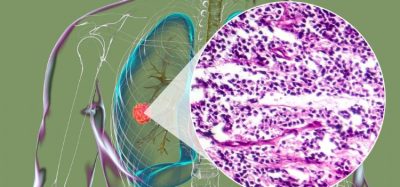Sanofi: Unravelling the complex, together
Posted: 5 January 2018 | Marc-Antoine Lucchini - Sanofi | No comments yet
Sanofi has long been at the forefront of the drive to find new, innovative solutions for patients in different therapeutic areas, such as diabetes, cancer, cardiovascular diseases or rare diseases. Marc-Antoine Lucchini, SVP Diabetes and Cardiovascular Europe and Coordinator, Sanofi Europe, discusses some of the company’s achievements…
What would you say have been the most significant developments in the pharmaceutical industry over the past 21 years?
The most significant development has been the move from chemistry-based medicine to biologics, which brings a greater focus on precision medicine. Driven by advances in genomics, pharmaceuticals, technology and eHealth, we are moving from a world in which medicine was used to treat symptoms, to a world that enables healthcare professionals to intervene much earlier in the disease process. This brings the hope of altering it one day.
2017 has been a year of evolution for Sanofi’s diabetes and cardiovascular businesses in response to a challenging environment. We are expanding our novel approach to R&D, helping deliver improved patient outcomes through value-based medicines (sotagliflozin) and integrated care solutions, while renewing our thinking to address ambitious long-term research goals (dual-agonist).
[insert_php] if ( zmember_valid_subscription() ) { echo ‘
DOWNLOAD THE ENTIRE 21st ANNIVERSARY SUPPLEMENT NOW
‘ ; } else { echo ‘
‘; } [/insert_php]
How has Sanofi evolved to meet these challenges?
Sanofi has long been at the forefront of the drive to find new, innovative solutions for patients in different therapeutic areas, such as diabetes, cancer, cardiovascular diseases or rare diseases. We have transformed our development activities since 2011, refocusing our pipeline and targeting areas where there is great unmet patient need – where we can make a real difference. In the past three years, we have launched several important products – Praluent being a prime example, that is helping to tackle cardiovascular disease. It is one of the first drugs to inhibit a protein called PCSK-9 which enables us to control cholesterol levels with unprecedented efficacy.
Looking ahead to the next few years, what do you think are likely to be the main opportunities and challenges affecting the industry?
In terms of opportunities, the technology and computing revolutions are going to greatly enhance the speed at which we study diseases, identify targets and develop new molecules. Furthermore, those advances will revolutionise the understanding of patients’ behaviours through the advent of connected devices, apps and an increased awareness from patients of their own health.
Patient engagement is also critical for us. We want to not only account better for patient needs for understanding the dayto- day reality of dealing with the disease, but also when designing clinical protocols. Today, a person with diabetes knows that managing the disease is tedious and timeconsuming. Diabetes management goes far beyond the treatment itself; it also includes taking extra care with food and exercise, monitoring blood sugar levels throughout the day, and taking time to prevent or manage common related health problems with eyes, feet, kidneys and the heart.
Utilising integrated care solutions is an avenue that Sanofi is exploring as it is Marc-Antoine Lucchini, SVP Diabetes and Cardiovascular Europe and Coordinator, Sanofi Europe key to providing ‘more than medicines’. By offering combinations of medicines, devices, software, support tools and analytics, patients are able to play a more engaged role in managing their diabetes outcomes. We also want to help payers optimise their expenditure on diabetes care.
With extensive in-house expertise, in collaboration with partners (such as Voluntis) and in our Onduo joint venture with Verily, we are taking a leading role in this exciting new area. This reflects our wider ambition to transform the management of diabetes with patientoriented, integrated care solutions. We are also applying this approach to other therapeutic areas where we work.
On the subject of challenges, I think we need to protect innovation by reinforcing the dialogue with different stakeholders at European and national level. In this way we can ensure healthcare systems and payers understand the value that is being created in new therapeutic solutions. Public health awareness and action is also a challenge and we need to use the full capacity of health care systems to increase our efforts in prevention and vaccination. How is your company preparing for these developments?
In addition to the relationships I have mentioned, Sanofi has strengthened its relationship with Evidation Health – the leader in quantifying health behaviours. For the next three years we will be working closely to better understand how the daily burden of disease affects patient outcomes. This is just one example of how valuable digital tools use data and analytics to gain real-world insights that help patients.
Additionally, Sanofi supports activities and initiatives from organisations such as the various global BioLabs. These spaces improve patient care by encouraging early-stage innovations and extending that information in a high throughput environment of drug development with the aim of delivering breakthrough therapies to patients.
What would you say has been Sanofi’s outstanding achievement (or achievements) of recent years, and what impact has this had on patients and potentially the industry in general?
Where a company like Sanofi can make a difference is by advancing science and translating it into medicines for patients, where no suitable treatment exists. In March 2017 we received approval from the FDA, followed in September by the EMA, for a ground-breaking new molecule in the treatment of atopic dermatitis – a highly debilitating skin disease. Dupixent is a bispecific antibody and so attacks two targets at once.
Successful innovations in pharma are likely to increasingly rely on partnerships and collaborations between manufacturers, suppliers, academics, and a whole range of other companies and organisations. What do you look for in these relationships, and can you give an example of one that has worked particularly well for Sanofi?
Sanofi R&D believes in partnering and external innovation. In recent years, it has become clear that our traditional scientific approaches, on which we have been relying for decades, will not be sufficient to create the next generation of medical breakthroughs.
Sanofi partnerships with leading academic institutions and innovative biotech companies have led to the discovery and development of groundbreaking new therapies that empower the lives of patients every day. We have a tremendous need to understand the complex biology of diseases. Gaining these insights requires an enormous amount of research whose success will rely on strong global collaborations, public-private partnerships and innovative initiatives within the private sector. While we do not comment on deals under negotiation, we can highlight a couple of the important partnerships from this year.
One such example is the major strategic collaboration in the immunology space, utilising a novel biologics platform to advance the research strategy through the development of transformative multi-targeting treatment approaches. We also have an agreement to develop a novel CD40L antibody with the potential to treat a broad range of autoimmune diseases. CD40L suppresses the activity of a cellular pathway that is overactive in many autoimmune diseases, including Lupus and Multiple Sclerosis. In the diabetes field, we are conducting an early-stage strategic investment-partnership focused on novel next-generation insulin analogues.
Sanofi profile
Sanofi is a global life sciences company committed to improving access to healthcare and supporting the people we serve throughout the continuum of care. From prevention to treatment, we transform scientific innovation into healthcare solutions in human vaccines, rare diseases, multiple sclerosis, oncology, immunology, infectious diseases, diabetes, cardiovascular and consumer healthcare. More than 100,000 employees are dedicated to making a difference to patients’ daily lives. Our presence spans 100 countries and we have industrial sites in more than 40 countries. In 2016 company sales were €33,821m.









